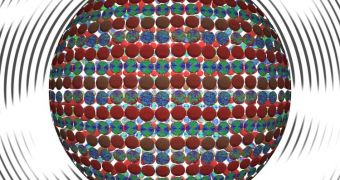University of Wisconsin-Madison (UWM) experts, led by professor of chemical and biological engineering Juan J. de Pablo, say that manipulating liquid crystals at the small scale can lead to the creation of new materials with unsuspected properties.
Liquid crystals are commonly known today as the materials in LCD flat screens, which are used in TV sets and computers around the world. While they've been under investigation for years, it wasn't until recently that scientists realized they could be used to build other materials.
In the new computational study, an international collaboration of investigators was able to figure out that the liquid crystals can be manipulated, at the smallest scales, in order to create entirely new class of materials. The latter exhibit properties that have yet to be encountered anywhere else.
Details of the arrangements that need to be obtained in order for the materials to emerge are published in the May 3 issue of the top scientific journal Nature. "From an applied perspective, once we get to very small scales, it becomes incredibly difficult to pattern the structure of materials,” de Pablo says.
In the computer simulations he and his team set up, liquid crystals proved capable of self-organizing into new materials at the molecular level. As far as researchers could tell by looking at the models, the compounds could have significant practical applications.
“The researchers have taken a new and exciting approach to the study of liquid crystals, which will have impact in several scientific and technical arenas,” says Program Director for Materials Research Science and Engineering Centers at the US National Science Foundation (NSF), Mary Galvin.
The organization provided the funds needed for this research through the UWM Center on Nanostructured Interfaces, which is a NSF Center of Excellence for Materials Research and Innovation. Additional funds came from the US Department of Energy (DOE) Office of Basic Energy Sciences.
In the computer simulations, the new materials resembled arrays of thousands of rod-shaped liquid crystals, organized neatly – and tightly packed – inside liquid droplets at the nanoscale. When the droplets are cooled, the molecules within start to organize themselves.
“At elevated temperatures, the droplets are disordered and the liquid is isotropic. As you cool them down, they become ordered and form a liquid crystal phase,” de Pablo explains.
“The liquid crystallinity within the droplets, surprisingly, induces water and other molecules at the interface of the droplets, known as surfactants, to organize into ordered nanodomains. This is a behavior that was not known,” the expert concludes.

 14 DAY TRIAL //
14 DAY TRIAL //